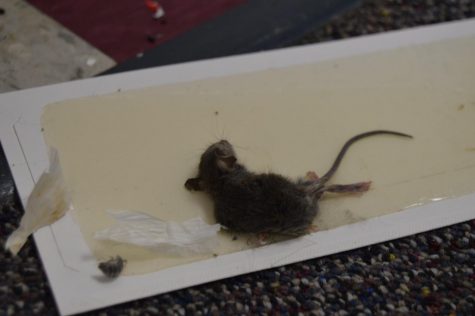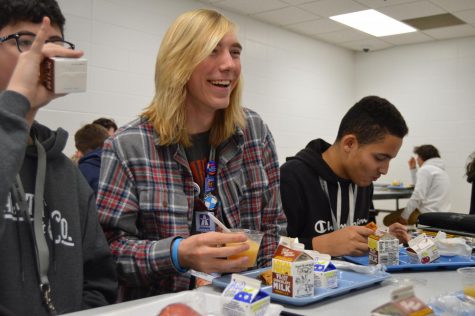From the Renaissance period to punk-rock
Students perform a grunge rendition of a 17th century classic play
Soft twinkle lights strung upon trees frame the stage, providing a stark contrast to the chain link fence that sits in the background, against a neon-lit graffiti wall telling its readers to “escape.”
Theater arts teacher Ashlee DeGraaf hopes to bring a never-before-seen rendition of William Shakespeare’s “A Midsummer Night’s Dream” to the stage.
The 400-year-old classic holds much for the audience to enjoy, but the set design ultimately drove her vision of the show.
“We ended up with this really cool stage that’s a little bit like a concrete jungle but also dreamy,” she says. “It’s morphed into what I wanted it to look like.”
Considering the play traditionally takes place in a forest, she wanted to retain elements of traditional adaptations while spinning the show in a new way.
“I was like, okay, let’s go urban city park and kinda go that route,” she explains. “But then we still need to make it dreamy because I really want to leave the audience questioning… what was the real part and what was the dream part.”
Degraaf blurs this line a variety of ways, from the set and lighting designs to her choice of casting multiple students as more than one character.
The costume choices also set Perry’s show apart from the rest. While the play usually features traditional Renaissance fashion, DeGraaf went for more of a 1990s aesthetic for her cast.
“For the lovers and the people of Athens we went for like a ‘Friends’ vibe,” she says, referring to the popular television show that ran from 1994 to 2004. The different types of characters each have distinct looks.
“Each group has their own motif,” DeGraaf says.
The students involved also share her enthusiasm about the set and costume design. Sophomore Frida Hernandez looks forward to the audience’s reaction.
“It’s Shakespeare but we went with a grunge twist, and I feel like that really puts a pop into it,” she says.
Hernandez plays Cobweb, one of the fairies. In the classic version, the fairies wear very flowery dresses. However, in this version, they have an edgier look.
“Instead of going fairy, we went with black, chains, spikes and leather,” DeGraaf says.
Many students contributed costume pieces from their own wardrobe, Hernandez being one of them.
“I enjoyed making the fairies look like e-girls because it was really my style,” she says.
The differentiation of the fairies parallels DeGraaf’s wish to separate her version of the show from anything she’s done before.
“It was more about setting them apart from the rest of the characters,” she says. “I wanted to make them drastically different than everyone else.”



